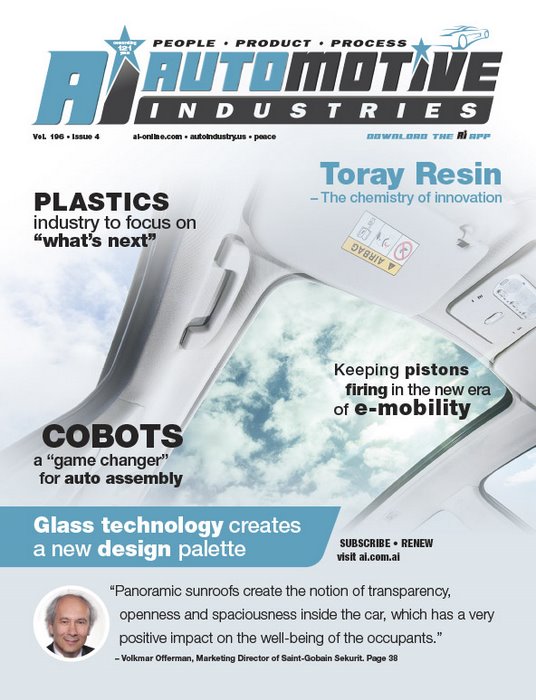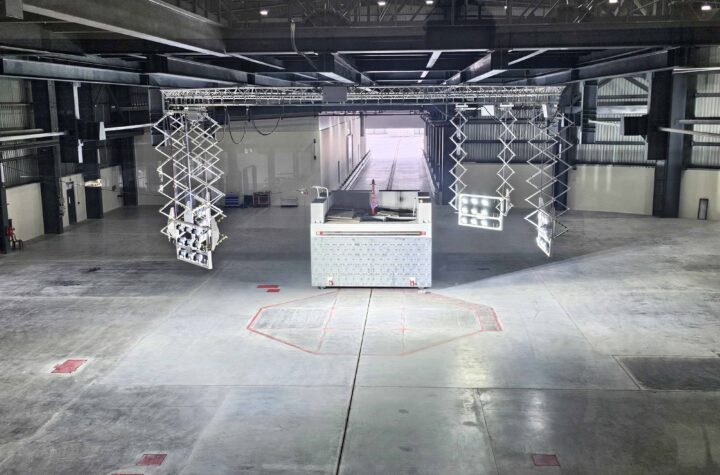
One of the most noticeable trends in the exterior design of passenger cars is the introduction of panoramic sunroofs. The roofs give occupants an unobstructed view of the heavens and a feeling of openness that comes with the impression that they are traveling in a convertible car – but without the disadvantages of noise, wind and rain.
With most manufacturers offering models with panoramic roofs, cars in general now have more glass. According to Saint-Gobain Sekurit in the early 1980s the average glass surface area in a car was about three square meters. This has grown to around 4.5 square metres. The key selling points are the clear view of the sky, a feeling of freedom and the large amount of light entering the vehicle. Saint-Gobain’s definition of “panoramic” is a large transparent glass surface in the roof of the car, with typically between one and two square meters of glass.
Automotive Industries (AI) asked Volkmar Offermann, Marketing Director of Saint-Gobain Sekurit, what market forces are driving the demand.
Offermann: Panoramic sunroofs create the feeling of transparency, openness and spaciousness inside the car, which has a very positive impact on the well-being of the occupants. More light in the vehicle means, on the one hand, that the interior is perceived as being more spacious, and on the other more light simply generates an effect that people feel better. Last, but not least, the transparent surface makes people feel closer to nature outside.
AI: Where do you see the biggest demand for panoramic roofs?
Offermann: There are different systems of panoramic sunroofs in the market – some are completely fixed, and some are partially or completely openable. But one thing they all have in common: the impressive market growth. On worldwide basis some 11% of all new passenger cars already have a panoramic sunroof. And the most successful mass market vehicle brand even reaches more than 40% equipment rate! Interesting to note is also that this feature is very successful on all continents. In 2017, for instance, the equipment rates are 18% in Europe, 11% in the Americas, and 8% in Asia. This underlines that a desire for light, openness and feeling close to nature is present in all cultures.
AI: What are the megatrends?
Offermann: My first observation is that panoramic sunroofs have tended to become a bit darker than in the past. This is due to the fact that with darker glass like Saint-Gobain Sekurit’s VG10 there is still a good impression of openness and transparency, but the heat entering the vehicle in summer conditions is greatly reduced, which results in better thermal comfort and less energy consumed by the air conditioning. And as a next step special coatings applied to the glass to enhance the anti-heat function are being introduced into the market.
AI: Is there an impact on energy efficiency?
Offermann: The focus on reducing vehicle energy consumption is having an impact on the evolution of panoramic sunroof design. Sunroofs need to improve aerodynamics while allowing engineers to reduce the height of vehicles. Today’s most common sunroof design with a glass on the outer skin and a movable roller blind below requires a considerable mounting space, and consequently it becomes more difficult to find this space when vehicle height is reduced. In some recent vehicle model concepts even the panoramic sunroof had to be eliminated because it was impossible to find a compromise between the conflicting objectives.
Fortunately, the SGS ComfortSky developed by Saint-Gobain Sekurit and brought to the market in 2012 on Ferrari FF and in 2014 on Citroen C4 Cactus can be a solution. The product comprises what is known as a “low-E coating” on the inner side of the glazing which operates like a thermal barrier in winter and in summer, and consequently the roller blind can be eliminated. This ability of ComfortSky to free up mounting space has made it a very successful product, and the market will see several more car manufacturers adopting this technology in the next three years.
AI: Is there further growth potential in the market?
Offermann: It is for sure that equipment rates will further grow, and that sunroofs will become even larger. More and more laminated glass shall be used, and the glass panels will more and more cover the full surface of the vehicle roof, without any additional elements around them. And some new car makers even consider panoramic sunroofs as a standard feature on their cars thanks to the benefits for exterior and interior design.
AI: What are the breakthrough technologies you are working on at present?
Offermann: The needs for more light, more comfort, and optimized energy consumption will also drive the growth of advanced glazing technologies like coatings. The next step could then well be smart technologies like switchable glazing, that are activated e.g. by tactile surfaces in the glass, or even by gestures. And why not imagine in an autonomous vehicle sunroofs even as an active surface to entertain the occupants? There is no doubt. The future is full of opportunities for panoramic sunroofs.









More Stories
MESSRING completes new crash test facility for Mahindra in India
ROHM Develops an Ultra-Compact MOSFET Featuring Industry-Leading* Low ON-Resistance Ideal for Fast Charging Applications
More than 30 of the top 50 global suppliers have production facilities in Turkey